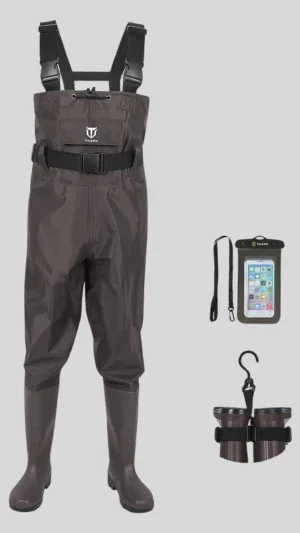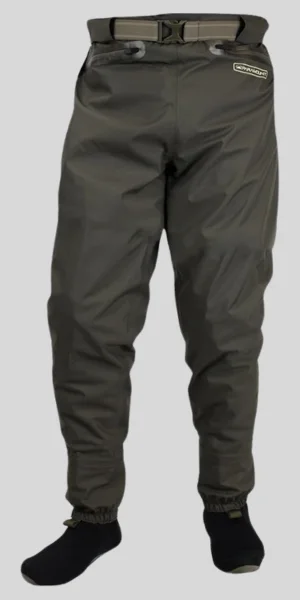Waist waders and chest waders are two of the most popular types of fishing gear used by anglers around the world. While both serve the same purpose of keeping you dry while wading in water, they differ in terms of their design and functionality.
In this article, we will take a closer look at waist waders and chest waders to help you determine which one is the right choice for your next fishing trip.
Whether you are a seasoned angler or a beginner, understanding the differences between these two types of waders can make all the difference in making your fishing experience more enjoyable and comfortable.
What are waist waders?
Waist waders are a type of protective clothing designed to keep the lower body dry while working in wet environments. They are commonly used by anglers, hunters, and other outdoor enthusiasts who need to cross streams or work in shallow waters.
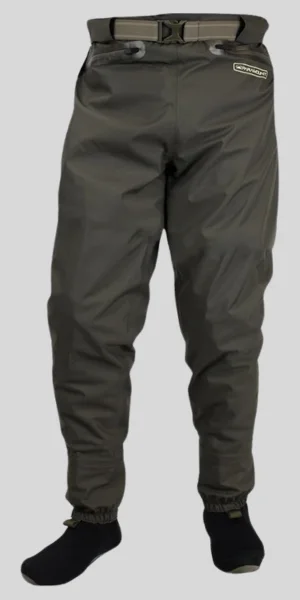
Why do people use waist waders?
People use waist waders for a variety of reasons, but the most common purpose is for fishing or hunting. These activities often involve standing in water for long periods of time, and waist waders provide a barrier between the person and the water to prevent getting wet.
Types of waist waders:
There are two main types of waist waders: hip waders and chest waders. Hip waders cover the lower body from the feet up to the waist, while chest waders extend up to the chest or shoulders. Both types are made of waterproof materials such as neoprene, rubber, or PVC.
Tips for choosing waist waders:
When choosing waist waders, it’s important to consider the material, fit, and features that best suit your needs. Neoprene is a good choice for cold weather as it provides insulation, while PVC or rubber waders are more durable and suitable for rugged terrain.
Make sure to try on waders before purchasing to ensure a proper fit and consider features that will make your outdoor activities more convenient and comfortable.
Benefits of wearing waist waders:
Aside from keeping you dry and comfortable in wet conditions, waist waders offer several benefits for outdoor activities. They provide protection against sharp objects, rocks, and other hazards on the ground.
They also help keep your clothes clean and dry, making them ideal for fishing, hunting, or any activity that involves working in or near water.

Caring for waist waders:
- Rinse them with fresh water after every use to remove dirt and debris.
- Hang them to dry in a well-ventilated area, away from direct sunlight or heat sources.
- Avoid storing them while they are still wet, as this can lead to mildew and damage the material.
- Check for any signs of wear and tear, such as holes or tears, and repair them as soon as possible to prevent further damage.
- Waist waders do not provide as much coverage as chest waders, leaving your upper body exposed.
- They are not suitable for deep sea fishing or in areas with strong currents.
- Waist waders can be less durable compared to chest waders, as they are more susceptible to tears and punctures.
What are chest waders?
Chest waders are a type of waterproof boot that is designed to be worn over the legs and torso, providing complete coverage from the chest down.
They are commonly used by fishermen, hunters, and other outdoor enthusiasts who need to stay dry while working or playing in wet conditions.
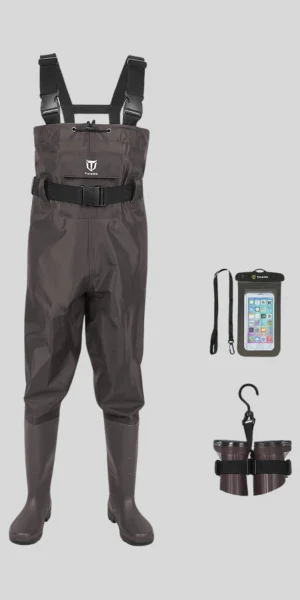
Why do people use chest waders?
People use chest waders for a variety of reasons. Some common uses include fishing, hunting, and working in water-related occupations such as farming or construction. Wading in deep or cold water can be uncomfortable and even dangerous without proper protection, which is where chest waders come in handy.
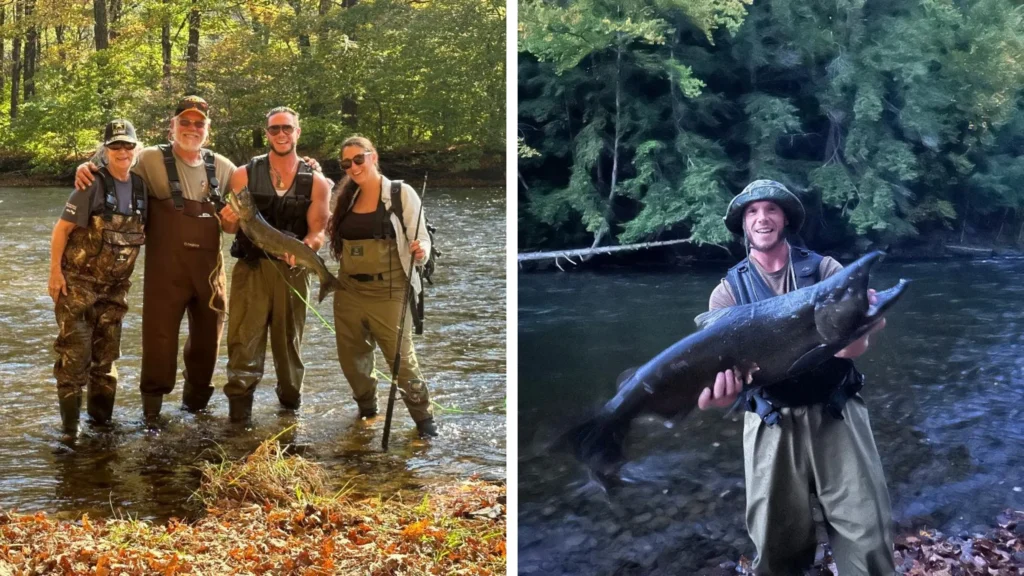
Types of Chest Waders:
There are two main types of chest waders: bootfoot and stockingfoot.
Bootfoot chest waders have an attached boot at the bottom, making them more convenient for quick trips or when minimal gear is needed.
These are ideal for activities such as fishing in shallow streams or walking through muddy areas. They can be less comfortable and limit mobility due to the fixed boot.
Stockingfoot chest waders, on the other hand, have a neoprene sock attached at the bottom and require separate wading boots. These are more versatile and provide better support for long hikes or deeper waters.
They also allow you to choose a specific type of boot that suits your needs, such as insulated boots for colder weather or sturdier boots for rough terrain.
Benefits of wearing waist waders:
Wearing chest waders offers several benefits, making them an essential piece of gear for many outdoor activities. These include:
Protection from water: The main purpose of chest waders is to keep you dry while working or playing in wet conditions. They provide complete coverage, ensuring that no water can enter through the openings.
Comfort and insulation: Chest waders are often made with materials such as neoprene or Gore-Tex, which provide both insulation and comfort. This makes them suitable for use in cold weather or when standing in cold water for extended periods.
Versatility: As mentioned earlier, stockingfoot chest waders offer more versatility due to the option of wearing different types of boots. This allows you to choose the appropriate footwear based on the terrain and weather conditions.
Storage: Chest waders often come with pockets for storing small items such as keys, phones, and fishing tools. This makes them convenient for keeping your essential items close at hand while also keeping them dry.
Caring for chest waders:
To ensure the longevity of your chest waders, it is essential to properly care for them. Here are some tips:
Rinse and dry after each use: After using your chest waders, rinse them with clean water and allow them to air dry fully before storing them. This will prevent any buildup of dirt or grime that can damage the material.
Store them properly: When not in use, store your chest waders in a cool and dry place away from direct sunlight. Make sure they are completely dry before storing to avoid mold or mildew growth.
Inspect for damages: Regularly inspect your chest waders for any tears, punctures, or cracks. These can be repaired with patch kits specifically designed for the material of your waders.
Wash as needed: If your chest waders are particularly dirty, you can wash them with mild soap and water. Avoid using harsh detergents or bleach, as this can damage the material.
Factors to consider when choosing between waist waders Vs chest waders:
When it comes to fishing and other water activities, having the right gear is crucial. One of the most important pieces of equipment are waders, which are waterproof boots that extend up to the chest or waist.
They keep your feet and legs dry while allowing you to move freely in the water. There are two types of waders: waist waders and chest waders.
Both have their own advantages and are suitable for different activities. In this guide, we will discuss the factors that you should consider when choosing between waist waders and chest waders.
Material:
Waist waders are usually made from lighter materials such as nylon or rubber, while chest waders are made from thicker materials like neoprene or PVC.
If you are planning to fish in colder weather, then chest waders would be a better option as they provide more insulation and keep you warm.
On the other hand, if you will be fishing in warmer weather or need to move around a lot, waist waders may be a more comfortable choice.
Height:
The height of your waders will depend on where you will be fishing and how deep you need to go in the water. If you are planning on fishing in shallow streams or rivers, then waist waders will suffice.
If you will be fishing in deeper waters or need to cross a river, then chest waders would be the better option as they provide more coverage and protection.
Comfort and Mobility:
Comfort and mobility are important factors to consider when choosing between waist waders and chest waders. Waist waders allow for more freedom of movement since they only cover your lower body.
This makes them a popular choice for activities like fly fishing or wading through streams. However, if you are planning on staying in the water for long periods of time, chest waders may be more comfortable as they provide full coverage and support for your legs and waist.
Convenience:
Waist waders are easier to put on and take off compared to chest waders. They also tend to be lighter and more compact, making them easier to transport. Chest waders, on the other hand, require more effort to put on and take off but they provide more protection against water splashing in from the top.
Price:
Finally, price plays a crucial role in the decision between waist waders and chest waders. Waist waders are generally more affordable compared to chest waders.
However, if you plan on using your waders frequently and in more extreme conditions, investing in a high-quality pair of chest waders may be worth the extra cost.
Related Post: Neoprene Vs Breathable Waders,
Waist Waders or Chest Waders: Making the Right Choice
As someone who loves spending time in the great outdoors, I have always found myself torn between waist waders and chest waders. Both offer their unique set of advantages and disadvantages, making it difficult to decide which is better. After extensive research and personal experience, I have come to a conclusion about which one truly reigns supreme.
Let’s start with waist waders. These waders are designed to cover your lower body, from the waist down to the feet. They are lightweight and less cumbersome compared to chest waders, making them ideal for short fishing trips or when you need to move quickly. Waist waders also provide excellent ventilation, keeping you cool and comfortable even on hot summer days.
Chest waders offer full body coverage, from the feet all the way up to the chest. They are perfect for longer fishing trips as they provide better protection against water splashes and potential hazards such as slippery rocks or thorny bushes. Chest waders also have more storage options, with pockets and loops designed to hold your fishing gear securely.
FAQs:
What are chest waders used for?
Chest waders are primarily used for activities such as fishing, hunting or other outdoor pursuits that involve standing in or near water. They provide extra waterproofing and warmth compared to waist waders, making them suitable for colder weather activities.
Chest waders also feature added storage features such as pockets and tool loops which can be very useful when out on long days spent outdoors.
Are waist waders good?
Yes, waist waders are a great choice for warm weather activities like fishing or hunting. They are lightweight and comfortable to wear and offer good movement in tight areas.
Waist waders may not be as durable or waterproof as chest waders but they will get the job done when it comes to keeping you dry while out in the elements. With pockets or other storage features available, waist waders can provide all of the necessary items needed for a successful day spent outdoors.
How do I choose waders?
It is important to consider the type of activity you will be participating in as well as the weather conditions. Waist waders are great for warm weather activities with less need for waterproofing while chest waders provide more protection from cold temperatures and wetter activities.
The pockets or other storage features can be very helpful when out on long days spent outdoors. The best option for you depends on your individual needs and preferences.
Do you wear clothes under chest waders?
Yes, it is recommended to wear clothes underneath your chest waders as the heavier materials can be uncomfortable against skin. It is best to layer up with a moisture-wicking base layer and other clothing items depending on the weather conditions and activity level. This will help keep you comfortable while still providing extra warmth and waterproofing when needed.
Do you wear shoes under waist waders?
Yes, it is recommended to wear shoes underneath your waist waders as the material can be slippery on wet surfaces. Shoes with good traction are especially important for activities such as fishing where extra stability is needed when standing in water or walking along banks of rivers and streams.
It is also a good idea to wear shoes that fit properly and provide support for longer periods of time spent outdoors.
Conclusion:
When it comes to choosing between waist waders and chest waders, it is important to consider the activity you will be participating in as well as the weather conditions.
Waist waders are a great option for warm weather activities such as fishing or hunting when extra waterproofing is not needed. Chest waders provide more protection from cold temperatures and wetter activities and feature added storage features that can be very helpful on long days spent outdoors.
Both types of waders provide excellent protection from wetness when standing in water for long periods of time. The best type of wader for you depends on your individual needs and preferences.

